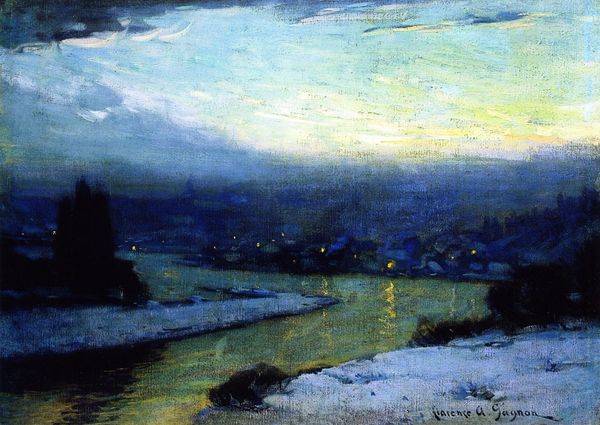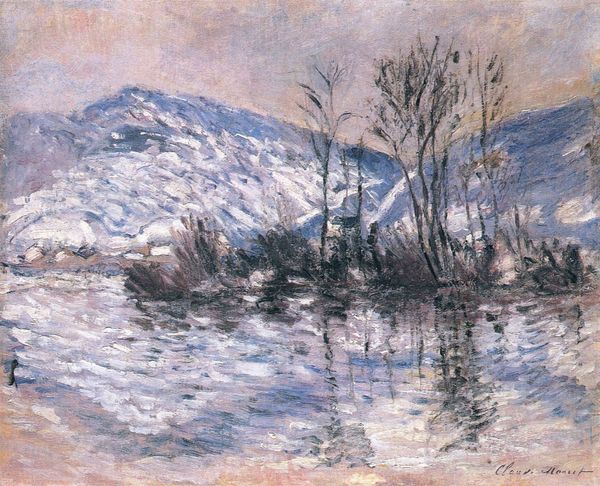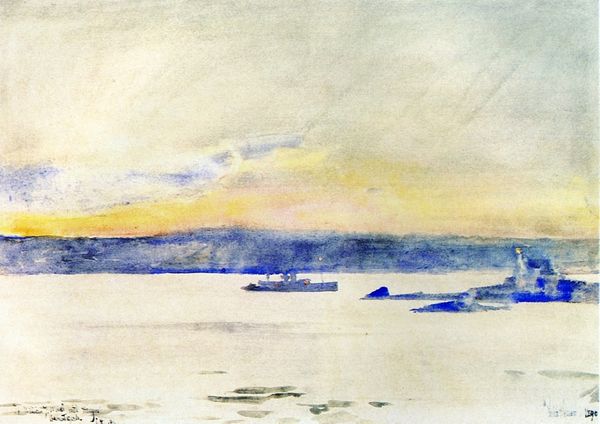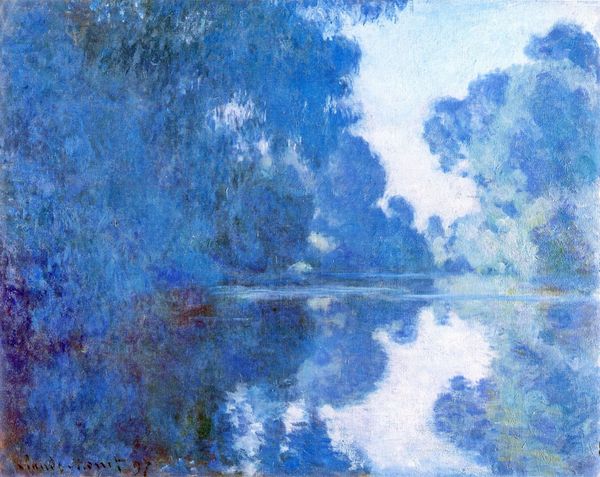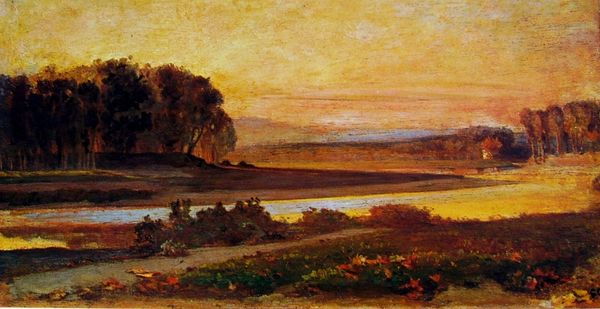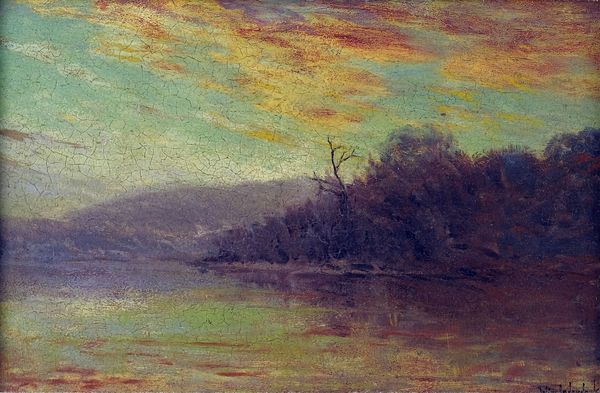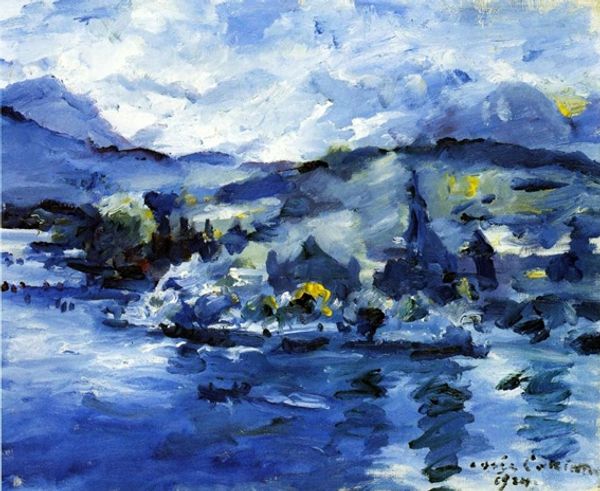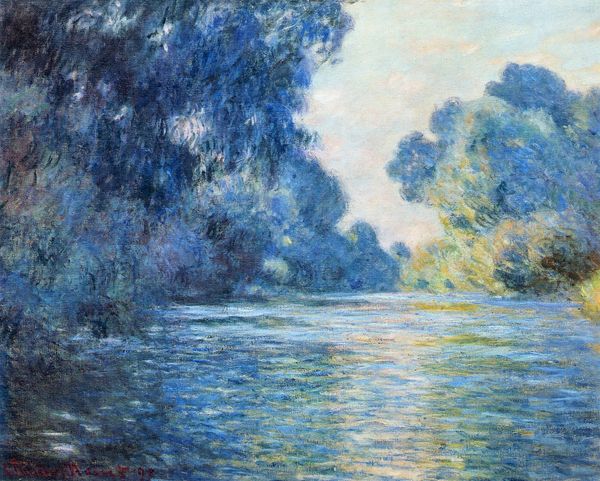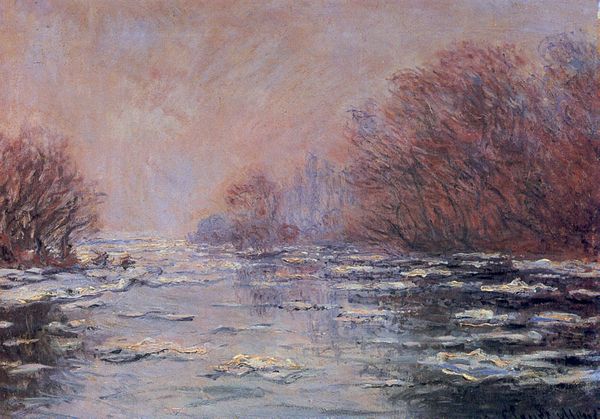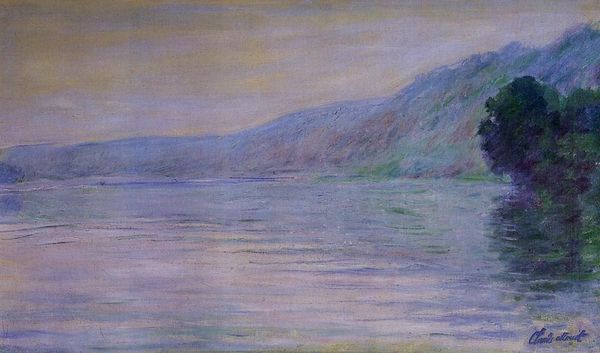
Copyright: Public domain
Curator: Clarence Gagnon's "Moonrise," dating to 1909, offers a captivating view of a tranquil winter night. Editor: Immediately, the overwhelming coolness strikes me. It's bathed in such consistent blues that evoke quiet and stillness. The near symmetry and the balance of the dark earth against the radiant moon...it's compelling. Curator: Gagnon, notably influenced by Impressionism, uses color here not just representationally, but expressively. Consider the composition, with the horizontal bands of earth and sky bisected by the vertical reflection in the water. Editor: Absolutely. The brushstrokes themselves have a story to tell. Notice the small dabs of yellow indicating house lights along the shore. Those hints disrupt the overall monochrome to create a point of entry—a locus of familiarity within this stark landscape. What were his influences at this point in his career? Curator: He was living in France but often painted Canadian landscapes from memory, so in that sense it relates to late 19th century Romanticism and the theme of Northern "paysage intime" – intimate landscapes. And, like those painters, this isn't just about depicting a place. It uses familiar themes to instill particular values about home and nation. This becomes crucial when understanding how these works functioned publicly in Montreal. Editor: So the historical context is significant in understanding its function, but the pictorial organization, even abstracted as it is, gives such gravity and lends it such quiet grace. Look at how the texture suggests snow – it appears simultaneously weighty and ephemeral. It's masterfully ambiguous. Curator: I concur, the way he renders light itself is structurally essential. The moon’s reflection acts like a hinge – uniting upper and lower registers in the work. It is simultaneously realistic and symbolic in that it uses light as more than illumination. It binds the pictorial space together. Editor: Precisely. Well, after closer inspection, the initial calmness gives way to something much more complex—an equilibrium between raw observation and constructed meaning. Curator: Yes, looking through the lenses of both form and history certainly adds a layered appreciation to this work. It moves us beyond merely registering a pretty landscape.
Comments
No comments
Be the first to comment and join the conversation on the ultimate creative platform.
